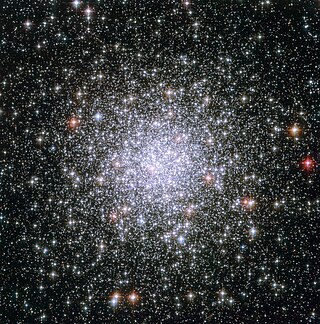
Messier 69 or M69, also known NGC 6637, and NGC 6634, is a globular cluster in the southern constellation of Sagittarius. It can be found 2.5° to the northeast of the star Epsilon Sagittarii and is dimly visible in 50 mm aperture binoculars. The cluster was discovered by Charles Messier on August 31, 1780, the same night he discovered M70. At the time, he was searching for an object described by Nicolas-Louis de Lacaille in 1751–2 and thought he had rediscovered it, but it is unclear if Lacaille actually described M69.
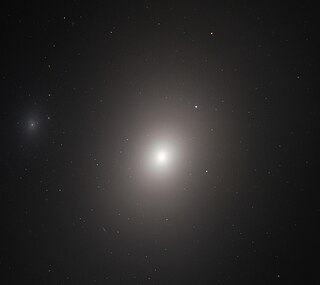
Messier 86 is an elliptical or lenticular galaxy in the constellation Virgo. It was discovered by Charles Messier in 1781. M86 lies in the heart of the Virgo Cluster of galaxies and forms a most conspicuous group with another large galaxy known as Messier 84. It displays the highest blue shift of all Messier objects, as it is, net of its other vectors of travel, approaching the Milky Way at 244 km/s. This is due to both galaxies falling roughly towards the center of the Virgo cluster from opposing ends.

NGC 1851 is a relatively massive globular cluster located in the southern constellation of Columba. Astronomer John Dreyer described it as not very bright but very large, round, well resolved, and clearly consisting of stars. It is located 39.5 kilolight-years from the Sun, and 54.1 kilolight-years from the Galactic Center. The cluster is following a highly eccentric orbit through the galaxy, with an eccentricity of about 0.7.

NGC 6304 is a globular cluster in the constellation Ophiuchus. William Herschel discovered this star cluster using an 18.5-inch (47 cm) f/13 speculum reflector telescope in 1786. It is about 19,000 light-years away, near the Milky Way's central bulge.

NGC 5256 is an object that contains two disc galaxies, that are colliding into each other. It is located in the constellation Ursa Major, and was discovered by William Herschel on 12 May 1787. The two nuclei of the galaxies are separated by about 13,000 light-years. The southwest and northeast nuclei have masses of 7×109 M☉ and 10×109 M☉, assuming they orbit around a common center of mass. NGC 5256 is located at about 420 million light-years away from the Earth.

NGC 6207 is a spiral galaxy located in the constellation Hercules. It is designated as SA(s)c in the galaxy morphological classification scheme and was discovered by William Herschel on 16 May 1787. NGC 6207 is located at about 30 million light-years from Earth. In the sky, it is located near the globular cluster Messier 13.

NGC 6229 is a globular cluster located in the constellation Hercules. It is designated as GC(v)B in the galaxy morphological classification scheme and was discovered by the British astronomer William Herschel on 12 May 1787. NGC 6229 is located at about 100,000 light years away from Earth.
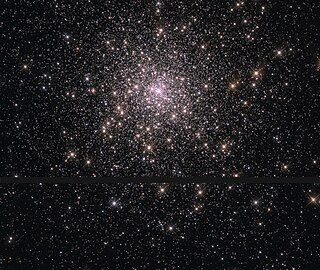
NGC 6284 is a globular cluster located in the constellation Ophiuchus. It is designated as IX in the galaxy morphological classification scheme and was discovered by the German-born British astronomer William Herschel on 22 May 1784. Its distance had previously been estimated at 49,900 light years from Earth, but this was revised in 2023 to around 43,000 light years. This same study, based on high-resolution Hubble Space Telescope optical observations, produced the first high-quality colour-magnitude diagram (CMD) of NGC 6284, extending down to about six magnitudes below its main sequence turn-off. The new observations moved its centre of gravity by 1.5–3 arcseconds from previous values, and its density profile showed a steep central cusp, suggesting that NGC 6284 is a post-core collapse (PCC) cluster.

NGC 6287 is a globular cluster located in the constellation Ophiuchus. It is designated as VII in the galaxy morphological classification scheme and was discovered by the German-born British astronomer William Herschel on 21 May 1784. It is at a distance of 30,300 light years away from Earth.

NGC 6293 is a globular cluster located in the constellation Ophiuchus. Its Shapley–Sawyer Concentration Class is IV. It was discovered by the American astronomer Lewis A. Swift on 8 July 1885. Like many other globular clusters, its distance is not well known; it may be anywhere from 31000 to 52000 light-years away from Earth.

NGC 6342 is a globular cluster located in the constellation Ophiuchus. Its Shapley–Sawyer Concentration Class is IV, and it was discovered by the German-born British astronomer William Herschel on 28 May 1786. It is at a distance of 28,000 light years away from Earth.
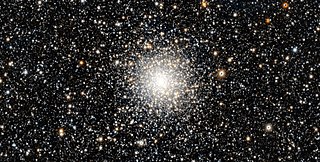
NGC 6356 is a globular cluster located in the constellation Ophiuchus. It is designated as a II in the Shapley–Sawyer Concentration Class and was discovered by the German-born British astronomer William Herschel on 18 June 1784. The star cluster is more dense and bright towards the middle. NGC 6356 is located 80' north east of the brighter NGC 6333. It is at a distance of 49,600 light years away from Earth.

NGC 6366 is a globular cluster located in the constellation Ophiuchus. It is designated as XI in the Shapley–Sawyer Concentration Class and was discovered by the German astronomer Friedrich August Theodor Winnecke on 12 April 1860. It is at a distance of 11,700 light years away from Earth.

NGC 6453 is a globular cluster approximately 37,000 light-years away from Earth in the constellation of Scorpius.

NGC 4564 is an elliptical galaxy located about 57 million light-years away in the constellation Virgo. NGC 4564 was discovered by astronomer William Herschel on March 15, 1784. The galaxy is also a member of the Virgo Cluster.

NGC 4570 is an edge-on lenticular galaxy located about 57 million light-years away in the constellation Virgo. NGC 4570 was discovered by astronomer William Herschel on April 13, 1784 and is a member of the Virgo Cluster.
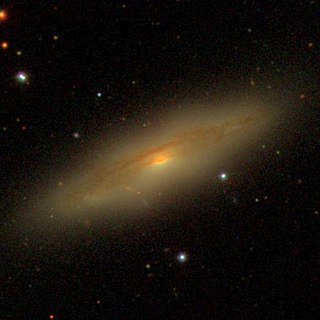
NGC 4586 is a spiral galaxy located about 50 million light-years away in the constellation Virgo. The galaxy was discovered by astronomer William Herschel on February 2, 1786. Although listed in the Virgo Cluster Catalog, NGC 4586 is considered to be a member of the Virgo II Groups which form a southern extension of the Virgo cluster. NGC 4586 is currently in the process of infalling into the Virgo Cluster and is predicted to enter the cluster in about 500 million years.
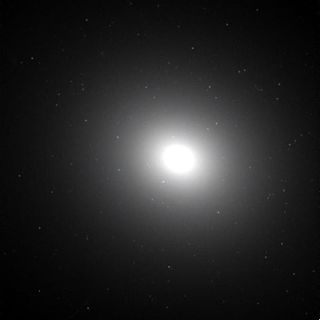
NGC 3309 is a giant elliptical galaxy located about 200 million light-years away in the constellation Hydra. NGC 3309 was discovered by astronomer John Herschel on March 24, 1835. The galaxy forms a pair with NGC 3311 which lies about 72,000 ly (22 kpc) away. Both galaxies dominate the center of the Hydra Cluster.
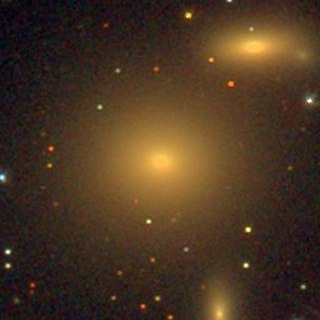
NGC 1278 is an elliptical galaxy located about 230 million light-years away in the constellation Perseus. NGC 1278 was discovered by astronomer Heinrich d'Arrest on February 14, 1863. It was then rediscovered by astronomer Guillaume Bigourdan on October 22, 1884 and was later listed as IC 1907. NGC 1278 is a member of the Perseus Cluster and is a low-luminosity AGN (LLAGN).

NGC 4237 is a flocculent spiral galaxy located about 60 million light-years away in the constellation Coma Berenices. The galaxy was discovered by astronomer William Herschel on December 30, 1783 and is a member of the Virgo Cluster. It is also classified as a LINER galaxy and as a Seyfert galaxy.




















